Grammar is the root of a language. In English, it can also be the root of confusion. You can use anchor charts to keep the rules simple and easy for a student to access.
In this post, you will learn about what should go into an effective grammar anchor chart, through discussion and examples of resources. I will also share some ideas of how to use grammar anchor charts in the classroom.
Table of Contents
- Key elements of a good grammar anchor chart
- Different ways of presenting the grammar in anchor charts
- Grammar Anchor Chart Resources from Teach Simple
- Anchor Chart Examples from Other Teachers
- Final thoughts on grammar anchor charts
Key elements of a good grammar anchor chart
Grammar is a huge area of language, so it’s not easy for a grammar anchor chart to include all the possible information. It is much easier to divide grammar up into sections.
That said, it is useful to have one overall anchor chart that identifies the aspects of grammar. In this case, the chart will need to identify at least:
- Parts of speech
- Punctuation
- Homophones and homonyms
- Synonyms and antonyms
- Tenses
- Apostrophe
- Prefixes and suffixes
- Spelling
- Phrases, clauses and sentences
- Active and passive voice
- Direct and indirect speech
- Concord (subject-verb agreement)
- Moods of the verb
- Negatives
- Singular and plural
No matter what aspect of this exhaustive list a grammar anchor chart focuses on, a good chart should feature:
- The name of the aspect of grammar
- Picture or graphic, if appropriate
- An explanation of the aspect of grammar
- Examples of grammar in context
Grammar lends itself to being put into boxes, so this can be a feature of a grammar anchor chart. The blocks will be at least the name, explanation and examples.
Of course, being English, there are also exceptions you will need to include in some of the upper grades.
I suggest making the grammar anchor chart quite specific, especially if it is interactive. English rules are applied in context, so students need to practice in the context of writing, even if it is only individual sentences.
Different ways of presenting the grammar in anchor charts
You can use anchor charts to play Bingo with the students. This would work particularly well with aspects that are specific and can include pictures, such as nouns. You could also use the same approach with words, such as synonyms and antonyms. Bingo is even a good way of revising types of sentences.
There is a lot of grammar to cover, so split it up. You can look at one specific aspect on an anchor chart, such as commas. You can also make natural links between aspects of grammar. For example: Use an anchor chart to show how nouns have a singular and a plural. The next anchor chart can focus on concord (subject-verb agreement) in a sentence.
Turn grammar into a treasure hunt with an anchor chart. For example, the chart can be a map of a text. The parts of the journey to fill in on the map can be aspects of grammar. For example: On the ‘journey’, make points where an explanation of a part of speech is given. The students must find two examples of the part of speech in the text.
Grammar Anchor Chart Resources from Teach Simple
Contractions anchor chart
This resource focuses on two words that are shortened.
This resource is aimed at grades 1 – 3. It is colorful and the students can relate to images of earth-moving equipment. The resource presents a number of examples, which is important. I find that the white writing against the red background is a little recessive. The font and format bring the student closer to the chart.
Introducing compound words anchor chart
This chart looks at how two words are put together.
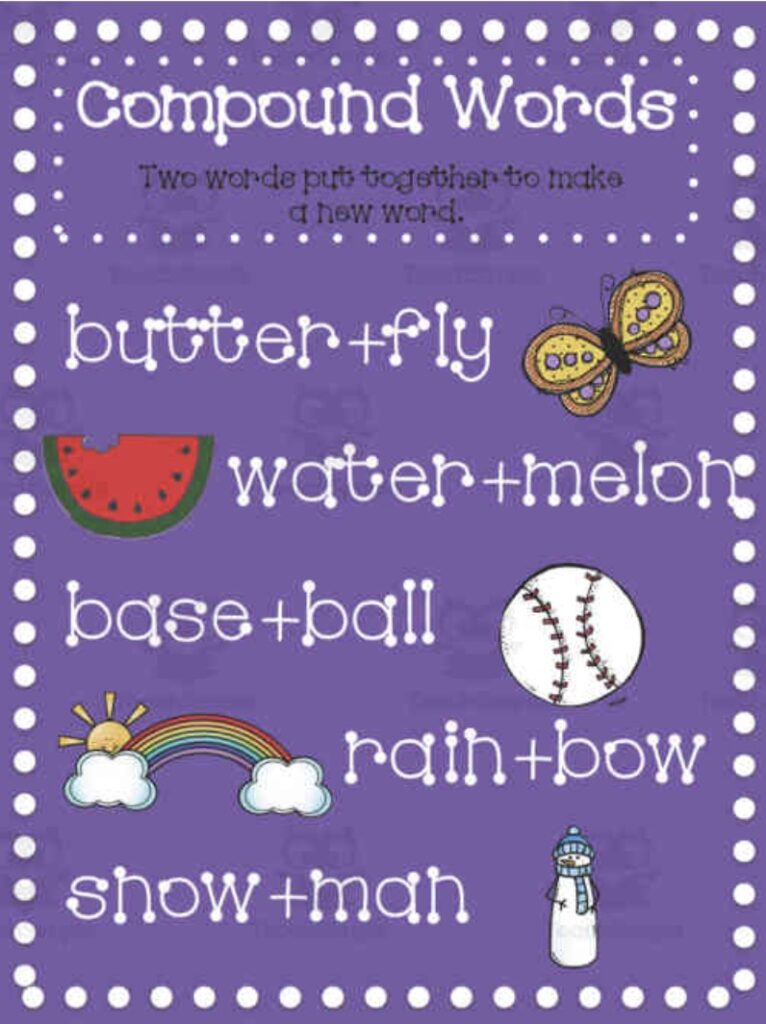
This resource is a good contrast to the previous one. The focus is on putting two words together to create a new word, not to contract them. The font is big and the examples stand out. They are effectively illustrated by the images.
Conjunctions: Practice and Evaluation
The conjunctions anchor chart is part of a set of resources.

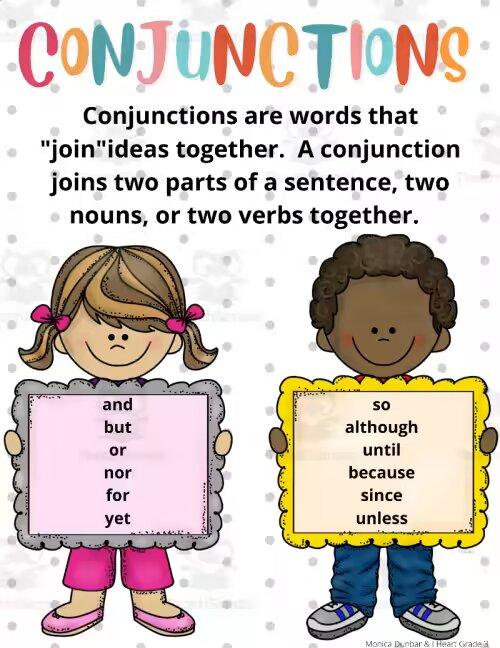
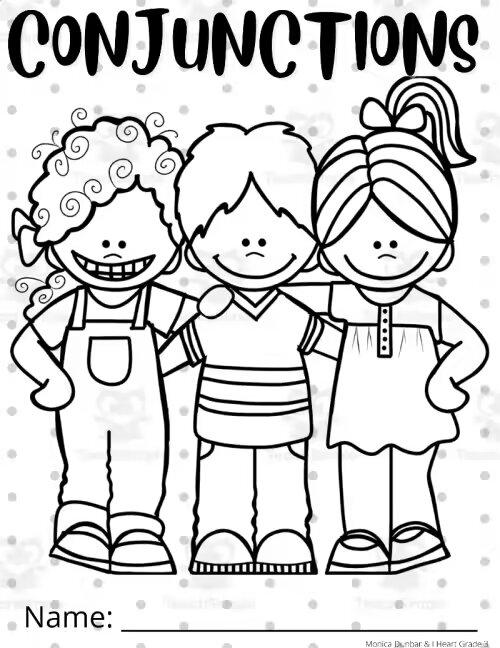
This resource is aimed at grades 3 and 4. It includes anchor charts and worksheets, with a teacher’s answer key. It is a useful all-in-one set of materials, which gives you what you need to teach conjunctions thoroughly.
Homophones anchor chart
This anchor chart explains the characteristics of homophones.
The image of the ear catches your attention, which immediately puts the emphasis on sounds. This is, of course, key to understanding homophones. There are two anchor charts in the set. The first is complete, the second can be filled in by the students.
Subject and predicate anchor chart
This chart begins with ‘Sentences have a…’ and indicates the subject and predicate in sentences.
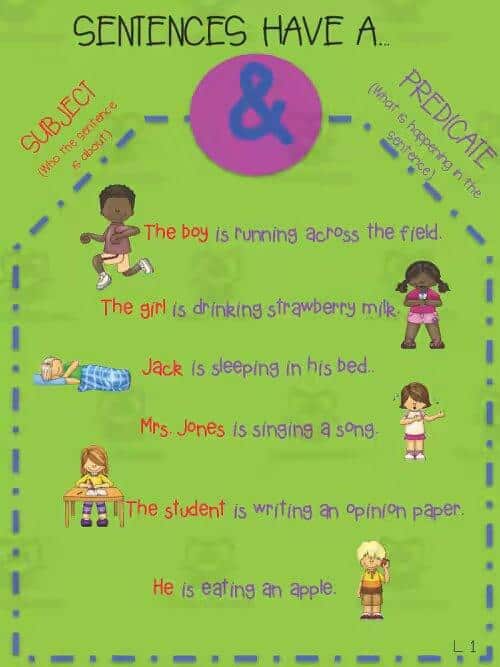

Colors are used effectively to organize information. The two parts of the sentences are made quite clear, with the linked pictures. There are two charts in the pack, one is complete and one is blank, for the students to fill in. They can be displayed, or put into the students’ books.
Verbs anchor chart
The anchor chart shows the verb tenses.


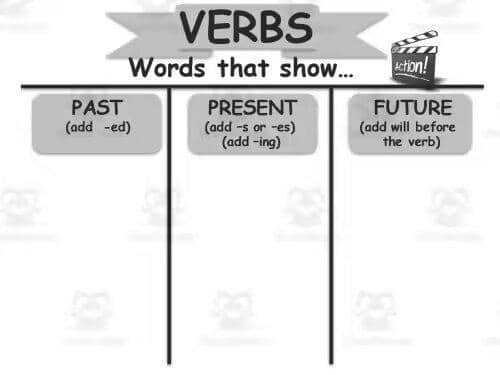
This chart should be used in conjunction with at least one other that introduces verbs. It presents the basic tenses in the columns that are well-organized. There are three anchor charts in the set. The first is an example and the students will fill in the others, making this a useful interactive resource.
Nouns and adjectives anchor chart
This anchor chart puts nouns and adjectives together.
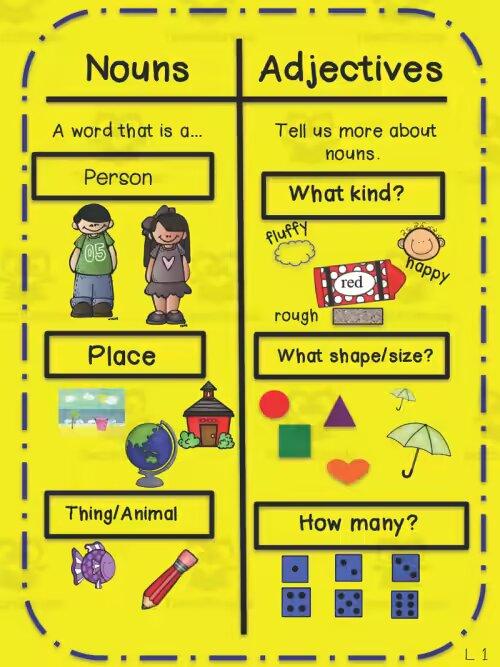

There are two anchor charts in this set. This an interactive resource, because the students can fill in the second blank sheet, working from the examples in the complete first chart. I suggest displaying the complete chart on the bulletin board, so the students can see it clearly when they do the activity.
Anchor Chart Examples from Other Teachers
Possessive + noun
The title of this resource is Hey, that’s mine! and focuses on using the apostrophe to show possession.
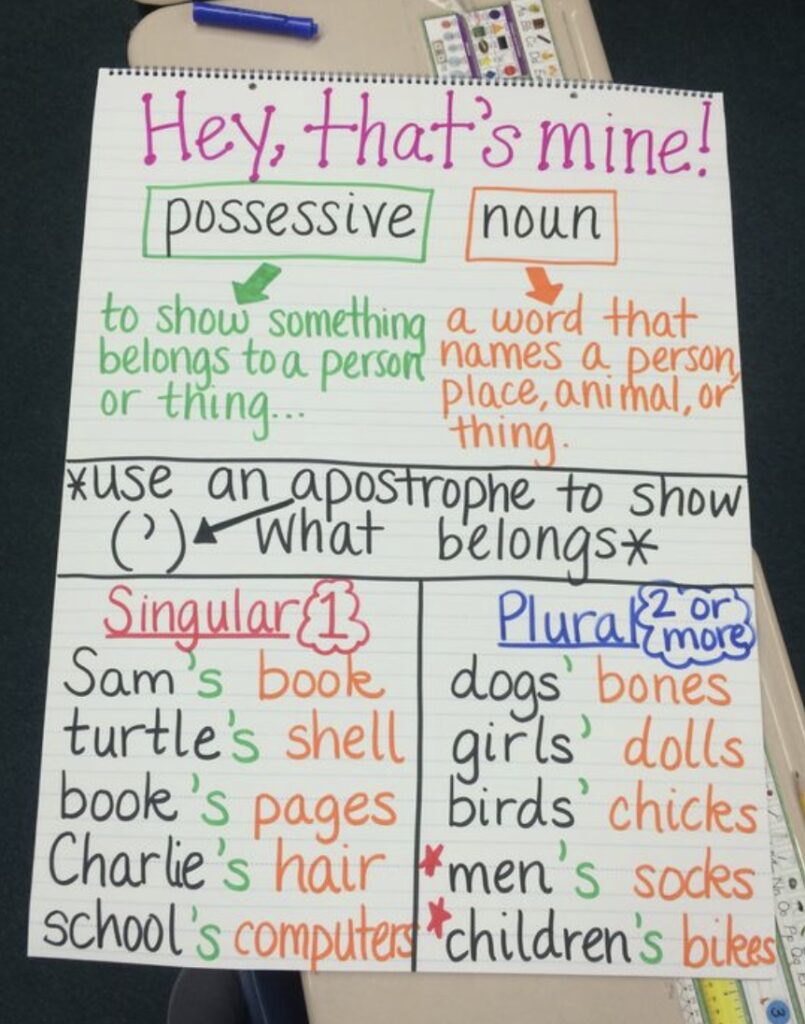
The heading of this chart grabs the attention. The only thing that may be a bit confusing is that the ‘possessive’ is also a noun. However, as reinforcement of the apostrophe for possession, this is a useful resource. It is also something you can fill in with the students.
Pronouns
This chart is part of a grammar resource.
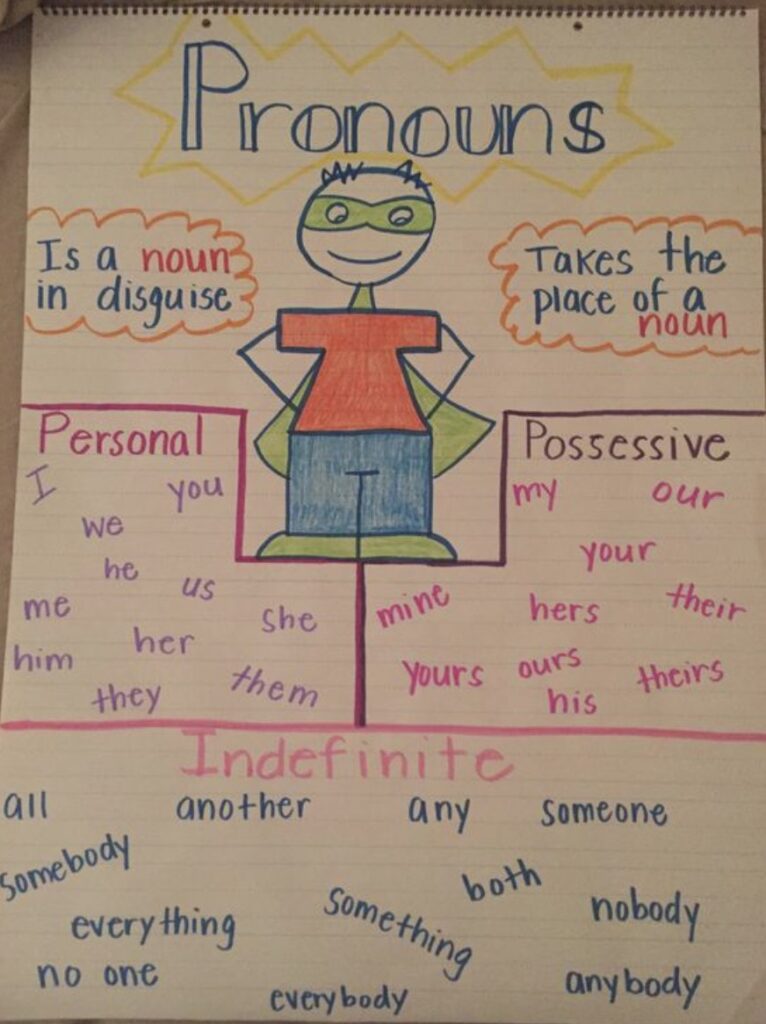
This is a great looking resource. I am a little concerned about the focus on pronouns taking the place of nouns, so you’d have to be clear on that. (Not all pronouns can be replaced by nouns.) However, the look, style and layout of the anchor chart certainly allows you to work with pronouns.
Verb tenses
This resource is information about the three basic tenses.
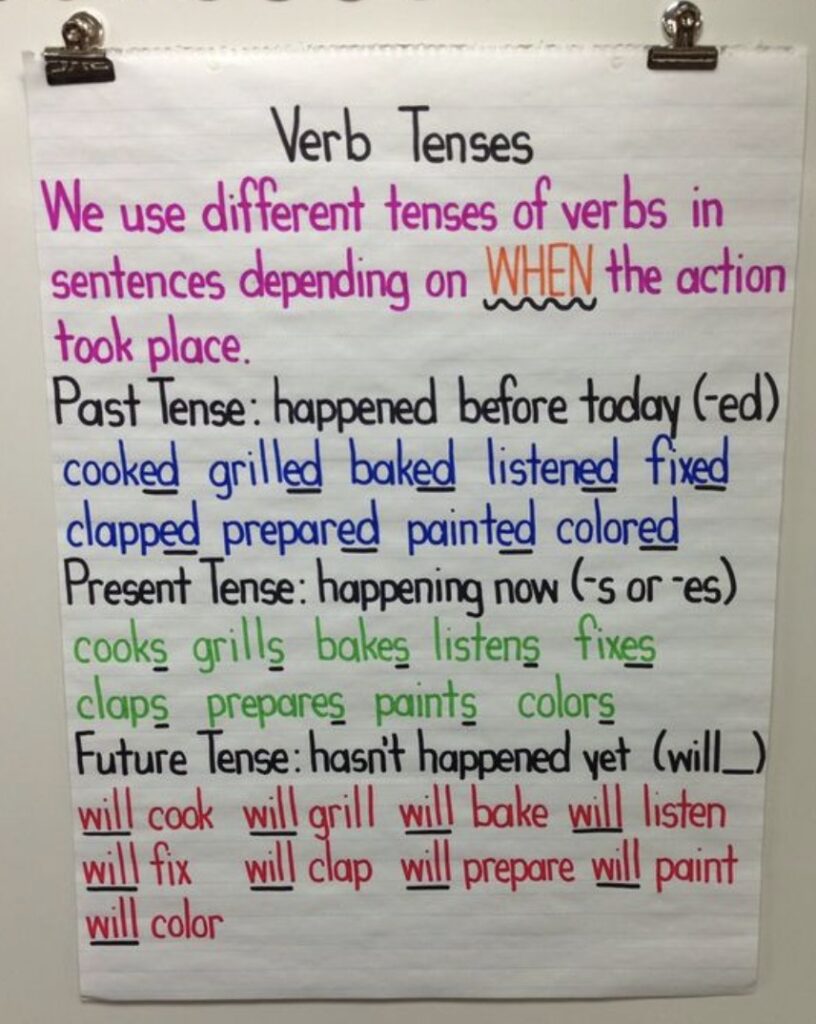
This is a simple, no-nonsense anchor chart. The purpose is to define past, present and future tense and give examples, which it does efficiently. The font is clear and the use of colors helps to break up the three sections. You’d need to use this as reinforcement, or revision when you move onto the other tenses in the higher grades.
Tense forms in English
This resource lays out all the tenses in English.
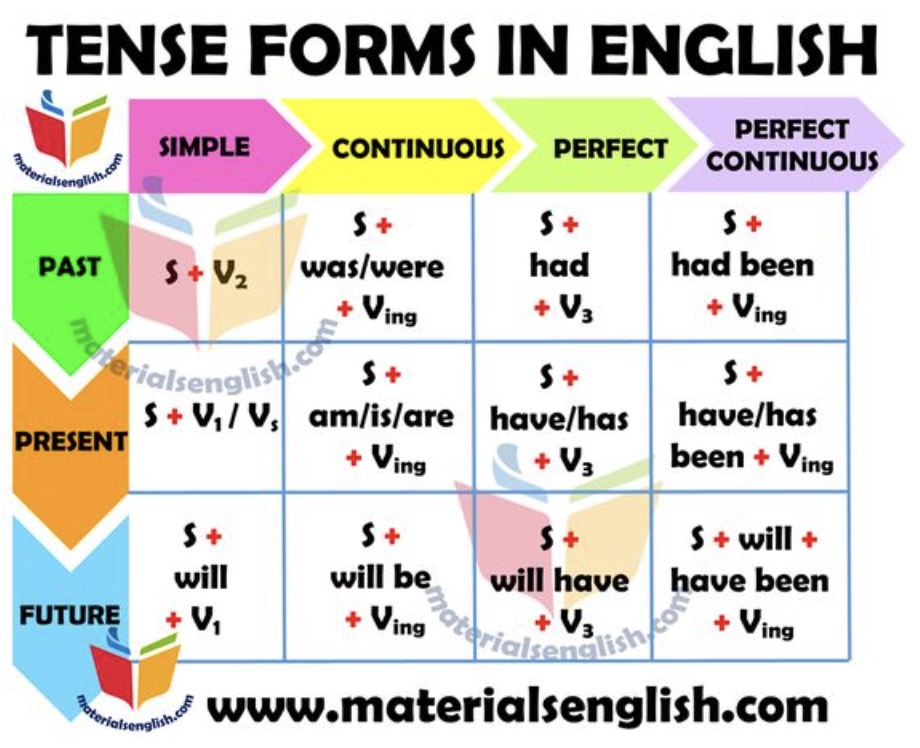
Use this anchor chart to follow on from one, such as that above, that introduces the three basic tenses. The colors and layout make the information clear. You will need to work at this with the students to find examples of each tense. They could create their own table to go with this and fill example sentences into the blocks.
Parts of speech
This is a comprehensive anchor chart on the parts of speech.
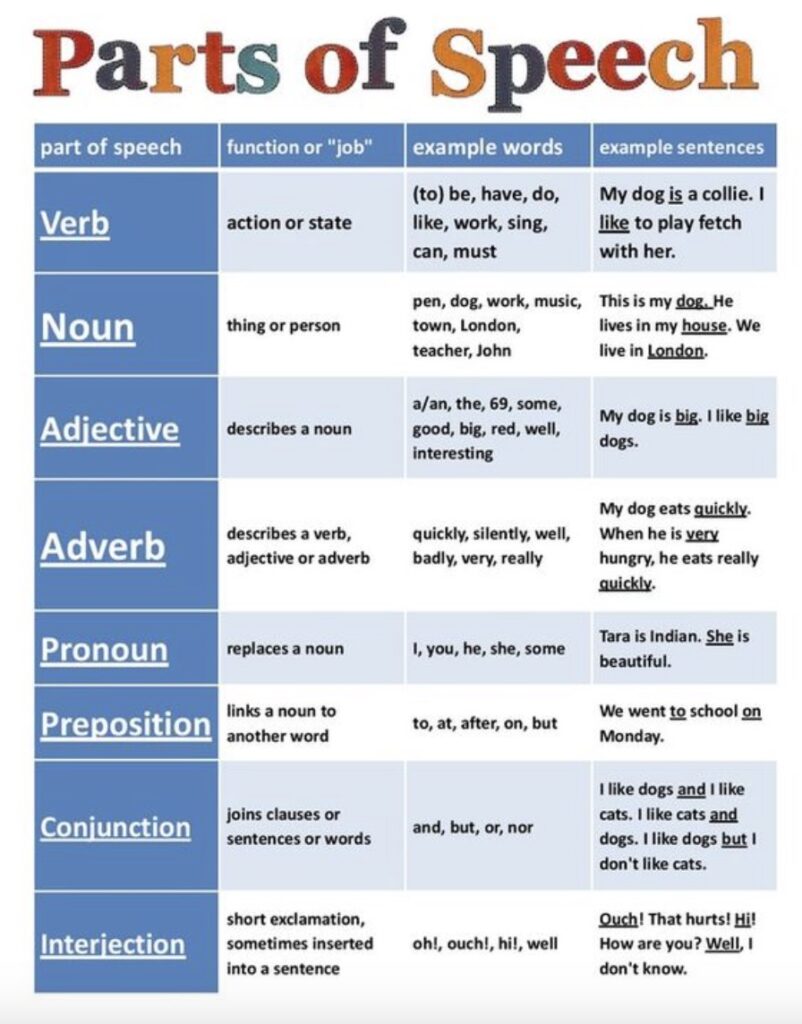
If you are looking for a comprehensive statement of the parts of speech, this is the anchor chart to go for. The 8 parts of speech are identified, explained and exemplified. You will need to extend the details of each type of word, but this is a good starting point, or useful revision.
Collective nouns
This is an anchor chart on collective nouns for grade 2.
Teaching collective nouns is quite a lot of fun, especially if you have an anchor chart like this. The layout makes the information easy to access. The use of pictures reinforces the nouns being learned. Even though the chart is aimed at grade 2s, you could easily use it for higher grades, particularly as a bit of fun revision.
Singular and plural
The focus of this chart is to alter the nouns to change the sentences from singular to plural.
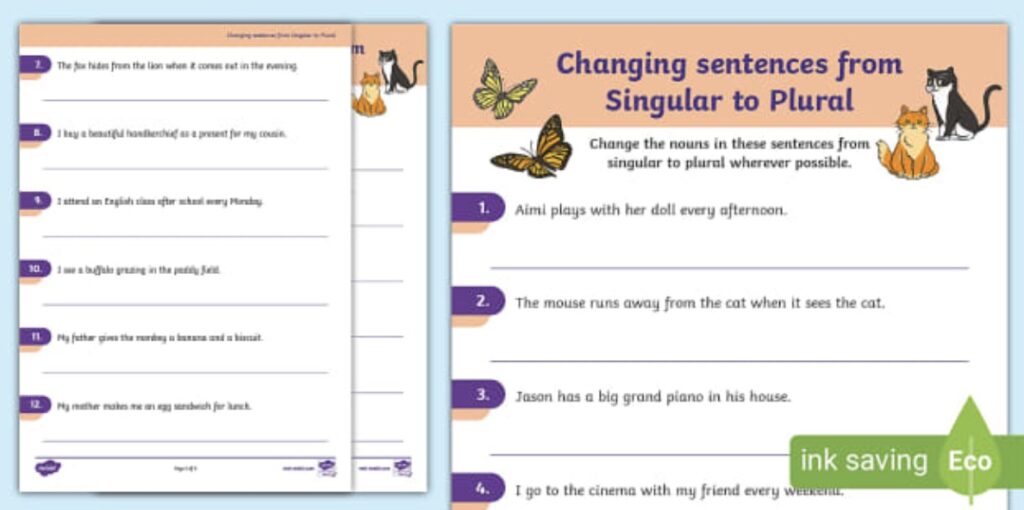
This is an interactive anchor chart that needs the students to fill in the answers. After they are done, the chart becomes informative and great for revision. It is quite formal and set out efficiently. The focus is on the written words.
Grammar anchor charts
This is a resource consisting of a set of anchor charts on grammar.
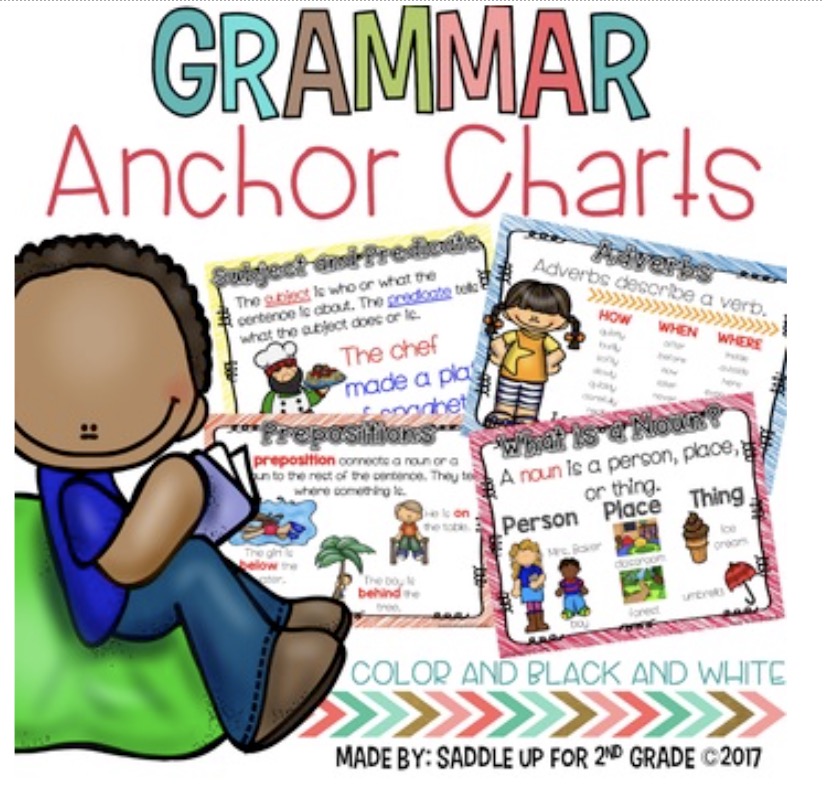
This resource is a treasure trove of grammar anchor charts. You can use them in isolation or in relation to each other. The colors, font and images are simple and perfect for the early grades. You could always have fun with the older grades and use these charts as a quick and easy way to revise aspects of grammar.
Pronoun chart
This anchor chart lays out all the types of pronouns.
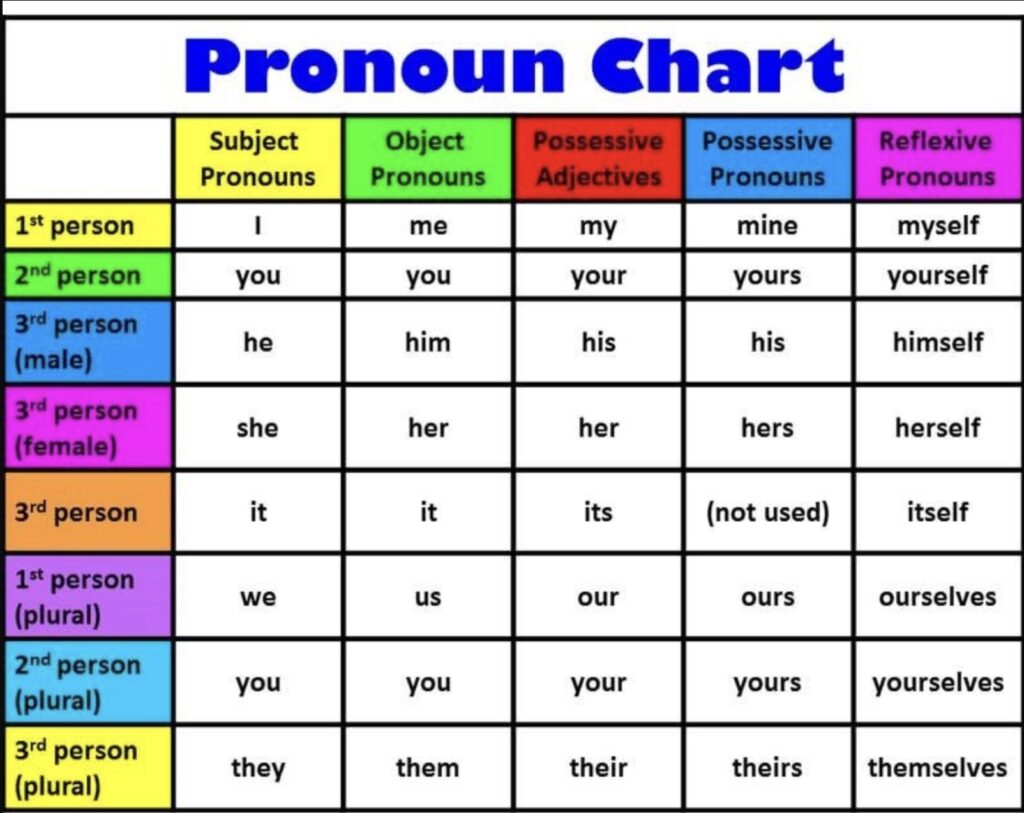
This anchor chart is a perfect follow-on from one that teaches parts of speech, or pronouns generally. All the possible versions of personal pronouns are listed and can be described efficiently. You could use this pattern as the blueprint for dealing with other types of pronouns.
Final thoughts on grammar anchor charts
Anchor charts are a very useful resource for teaching grammar. Because there are a lot of areas of grammar following a lot of rules, keep an anchor chart focused. Don’t try to do everything in one. You can work on a series of charts to teach aspects of grammar that link to each other.



